The Triumph TR7, a case of so near yet so far, styling wise. Legend has it that the Harris Mann-penned design (who also designed the similarly wedge-shaped Princess) was an offhand sketch - offhand in that it wasn't a serious proposal. But the bubbletop wedge shape appealed to British Leyland management, and they stuck with the project (codename Bullet) all the way through to production despite, some say, sage counsel to the contrary. What emerged was by no means as graceful as Giugiaro's Lotus Esprit or any of the Italian supercars it tried to emulate, being stubby and wide, almost as cartoonish as Mann's original drawing.
It was advertised as "The Shape of Things to Come," and defined by the famous curved line in the bodywork, sweeping down from the rear wing to the bottom of the front wheel arch. It was initially produced at the Speke, Liverpool factory, moving to Canley, Coventry in 1978 and then finally to the Rover plant in Solihull in 1980. It was quite the poster boy for scorn, hate and ridicule amongst ardent Triumph fans on it's introduction - accusations that it wasn't a 'real' Triumph, the engine was too small, it shouldn't have a roof; the list was almost endless. But the really damning comment was that it was ugly. Really ugly. That swage line, the roof, the bumpers - every aspect of the car's styling came in for scrutiny from late 70's Joe Public, but in hindsight the car's only crime was that it was so different from it's TR6 forbear. It was the right car for Triumph to produce at the time, considering it was meant for the American market and therefore had to pass a slew of emissions regulations and their 5 mph bumper impact laws.
TRAFALGAR
While in hindsight the TR7 (like it's BL stablemate the Jaguar XJS) has redeemed itself, what with the Drophead Coupé, the TR8 and the general consensus that the design has aged well, back in 1978 Ray Bennis didn't like the look of the nearly-new TR7 he had recently bought. So he commissioned custom car painter Geoff Ridgeway to paint murals of Lord Nelson and The Battle Of Trafalgar, hence the name. The rest of the car was standard, save for the Wolfrace slots, which may have been dealer supplied, as they were actually a option before BL introduced alloy wheels a few years later.
OLDE GLORY
Ray soon tired of a plain ol' TR7 with murals and wanted to get a lil' more radical; the fact that the car had been side-swiped and had a big dent in one side proved the perfect excuse for body mods. He didn't have the money to go out an buy his dream Corvette, so he did the next best thing and got Hornchurch-based customiser Nick Orme to remake the car more in a 'vette's image. Of course, there is only so much you can do to make a TR7 look like GM's finest, but it was a long way from being a TR7 as well once Nick had got through with it. Note that the new bodywork is all metal and not fibreglass as some people think; an even bigger feat than it sounds when you consider that once you take the bumpers off a TR7, there's basically not much behind them... As an aside, if there's one modification on this car that really should have been standard, it's those buttresses either side of the rear window - they on their own transform the look of a TR7 by losing that 'notchback' look.
The interior was trimmed in white leather with blue draylon and completely transformed the interior; no tartan cloth for Mr Bennis.
Ray once again knocked on Geoff Ridgeway's custom painted door to paint the car, now named Old Glory, as the murals depict the famous flag raising scene at the Battle of Iwo Jima.
It was featured in a TV programme about Geoff Ridgeway and Ray Mumford (yes, that Ray Mumford); video after the pics:
SEVENTH HEAVEN
And now onto the car's most famous incarnation. After about 2 years, Ray was getting the itch to change the car again; Olde Glory might have been radical for some, but it apparently had become a little mundane for him. Back it went to Nick Orme for even more radical surgery; witness those fat arches, formed by making a wire frame and working the metal to fit. Fat arches need fat wheels to fill them and 9x13 inch Compomotive TF cut with Pos-A-traction tyres did that job very nicely, thanks very much. Ray also decided to shelve plans to fit a Rover V8 in favour of squeezing more bhp from the SOHC Triumph slant-four, so off the engine went to the sadly now-defunct Opposite Lock in East London for a whole host of tuning goodies, topped with twin Dell'Orto 40DHLA carburettors and a whole bunch of chromed and polished alloy engine parts, the polishing being done by Ray himself. I'm trusting his fingerprints returned after a few months.
Seventh Heaven was featured in quite a few magazines, as seen below, but Ray had little time to bask in the glory of his now rather beautiful TR; all of the expense in getting the car to this peak of perfection had taken it's toll on his wallet. Ray was unfortunately forced to sell the car in 1982 to a work colleague's brother who ran a car dealership in East London for a knock-down price.
It then promptly vanished; the car's road tax ran out in 1983 and has never been renewed.
|
|
Now Ray was rather attached to his TR7, as you've guessed; selling it was a wrench and well... he wants it back. Trouble is, where do you start looking for a car that vanished 30 year ago? Well this my friends, is the $64,000 question and quite frankly I don't have the answer. But, hopefully with the help of the modified car community (and posting this feature), we can spread the word and maybe, just maybe the gospel will reach the right person with the right answer. That may well be a stretch; for all we know the car has long been destroyed and this story doesn't have a happy ending.
But I'm just willing to bet that the car is sitting tucked away in someone's garage, waiting to get reacquainted with it's former owner and wow a whole new generation of car fans.Ray really will be in seventh heaven if that happens.
- Amazosan
With grateful thanks to Ray Bennis and all concerned at rods N' Sods.




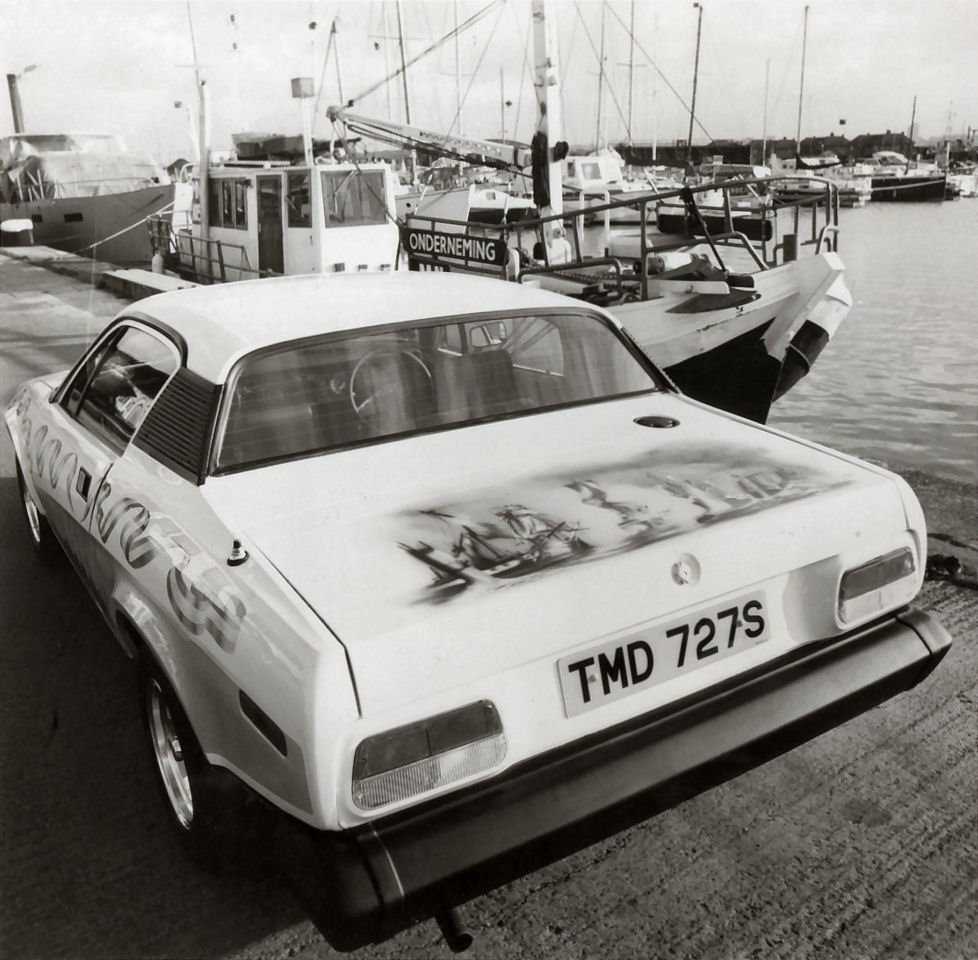


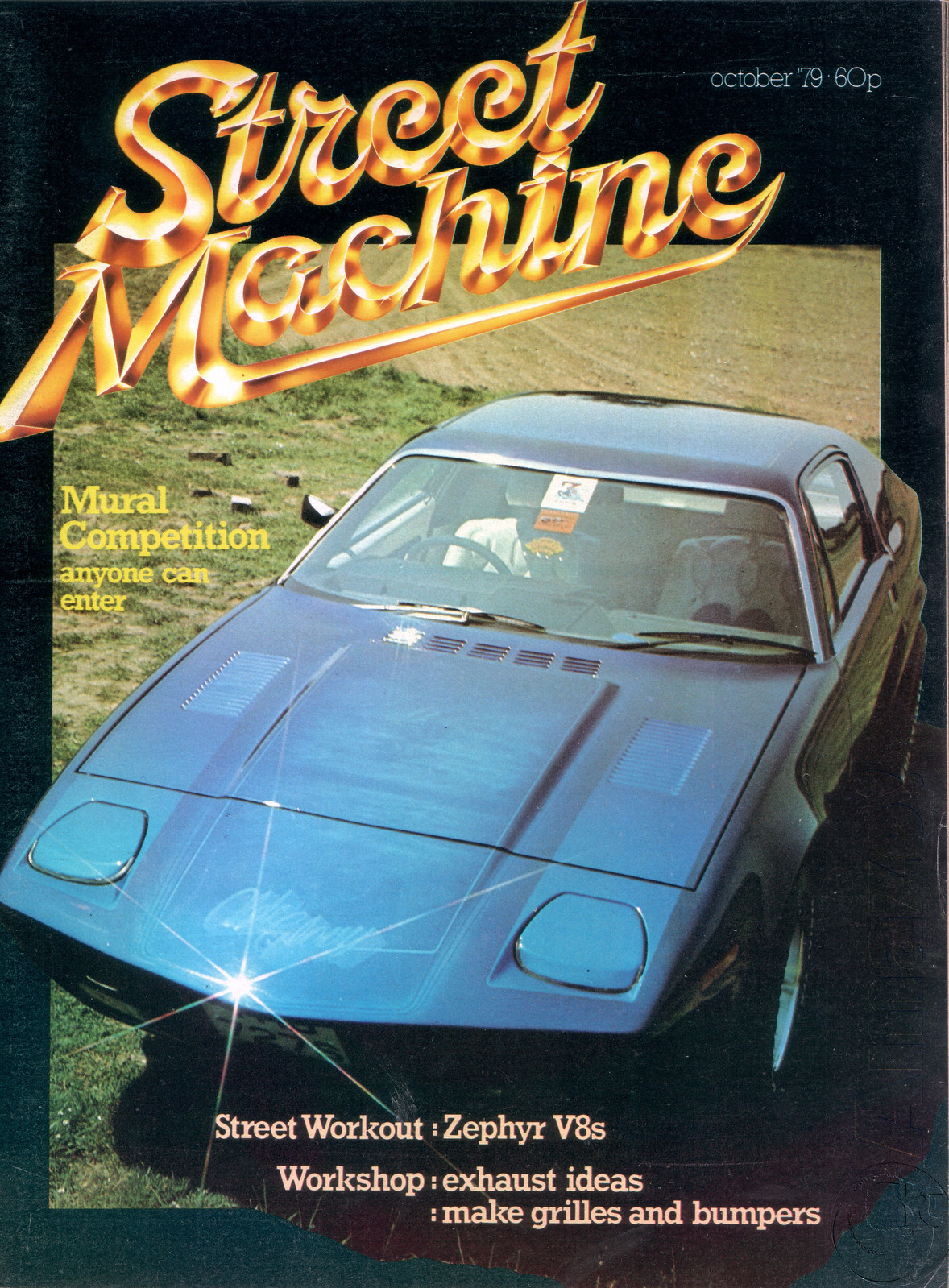
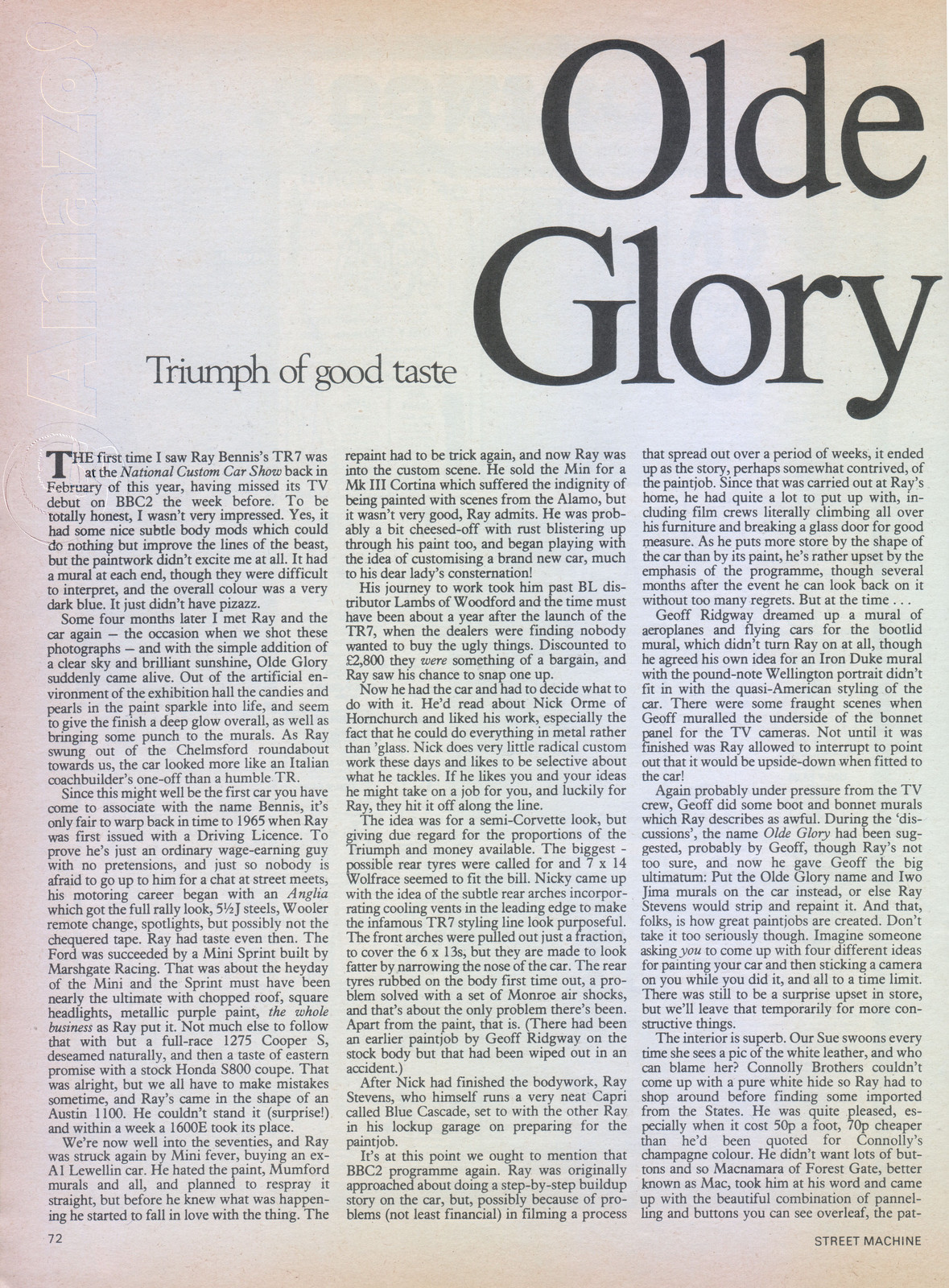
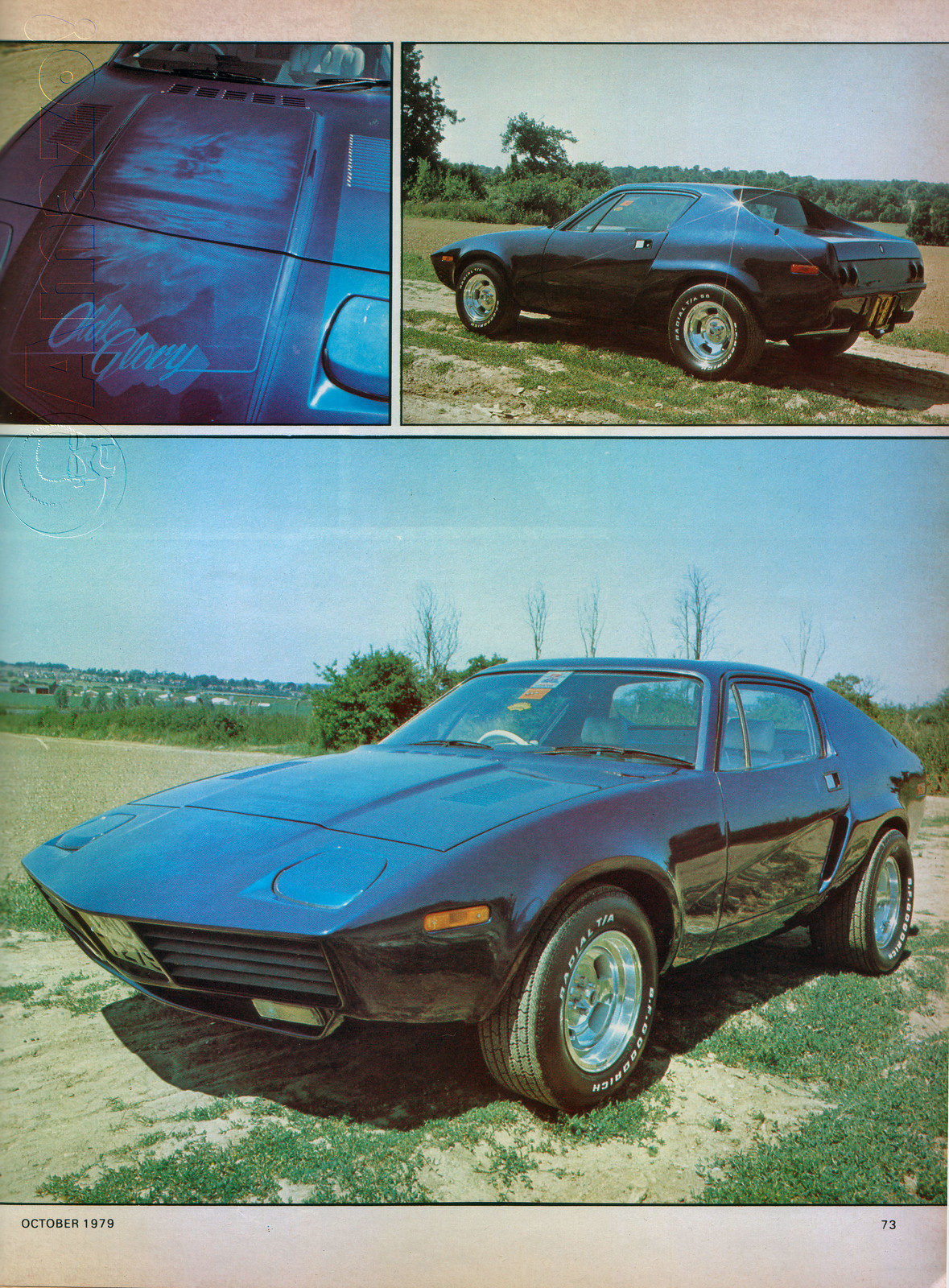

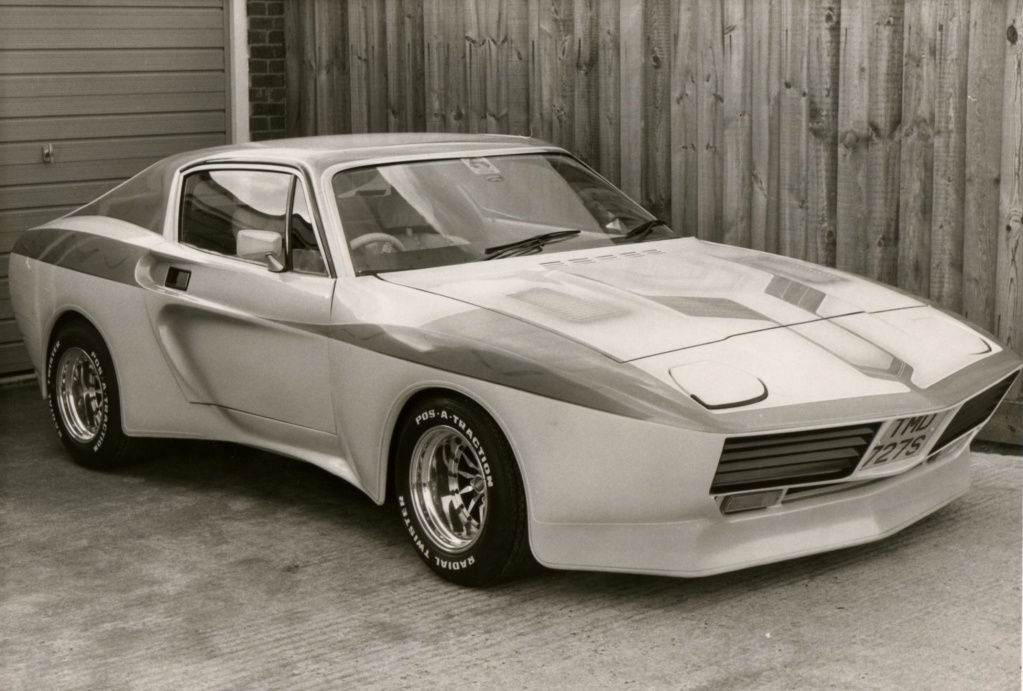

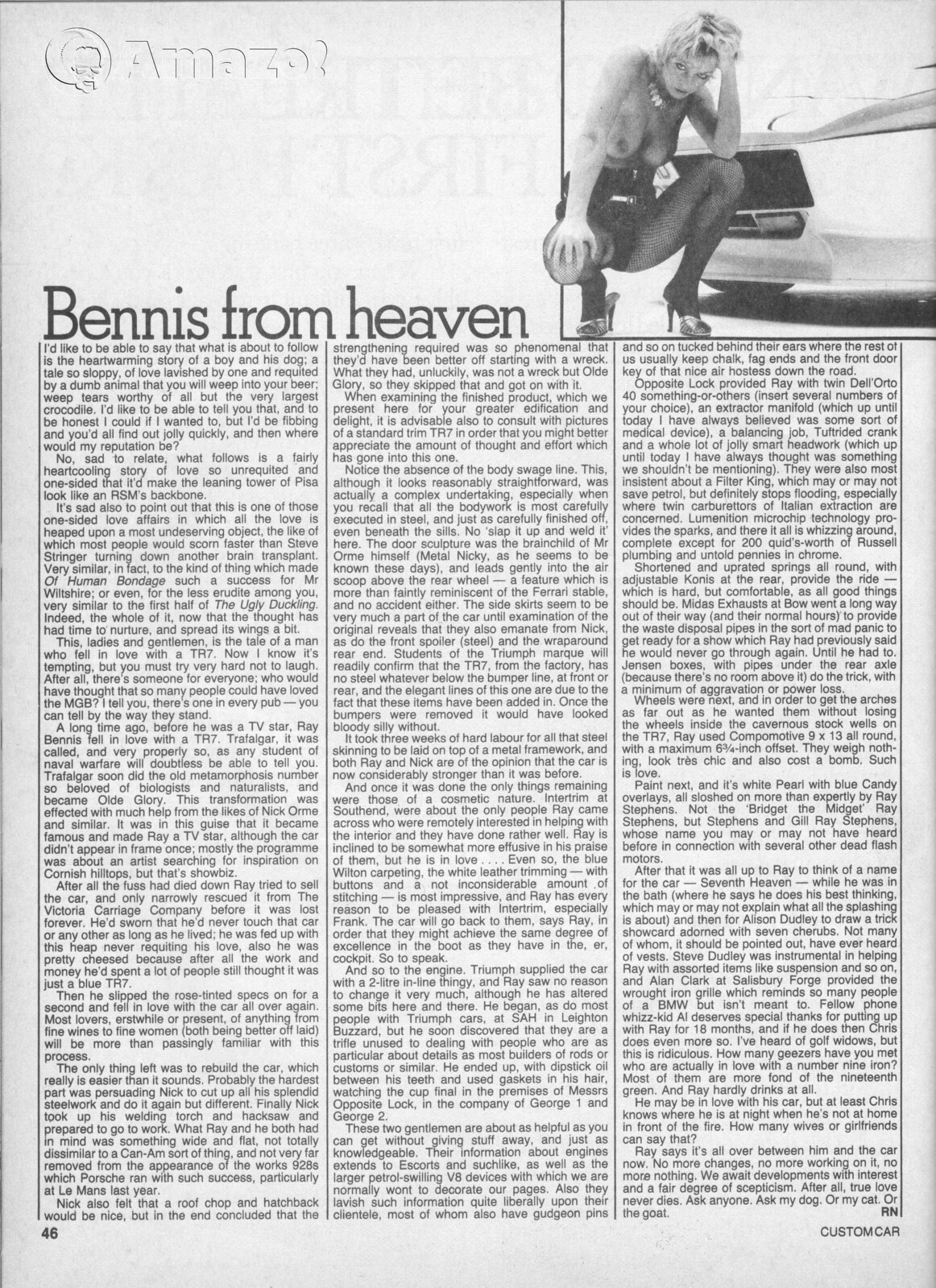
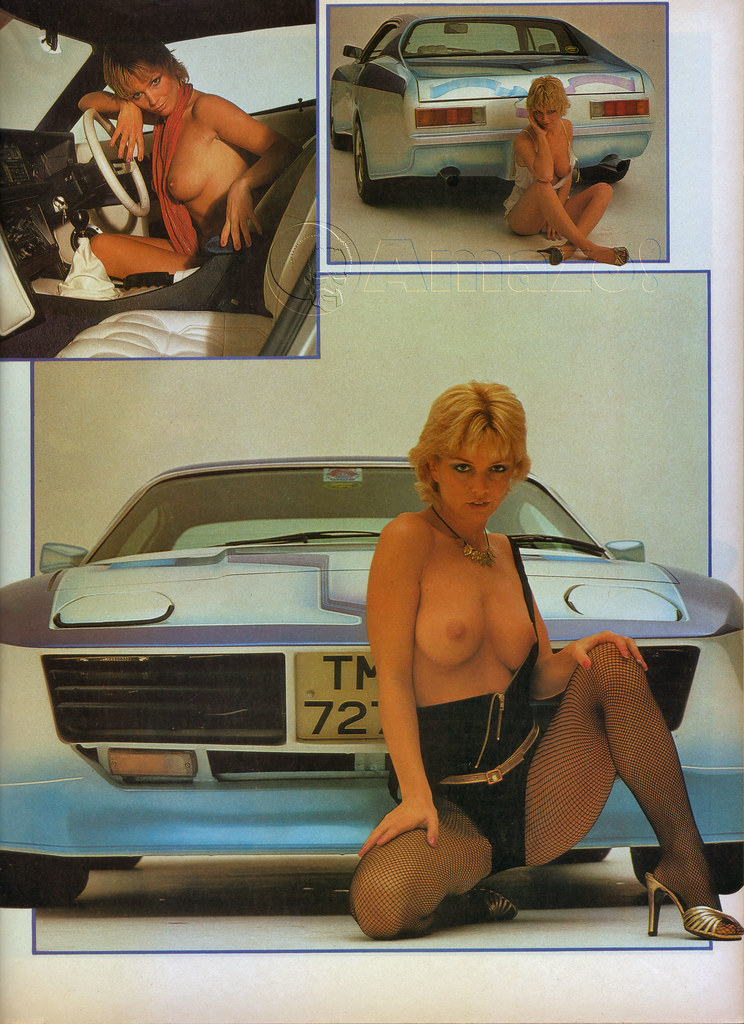
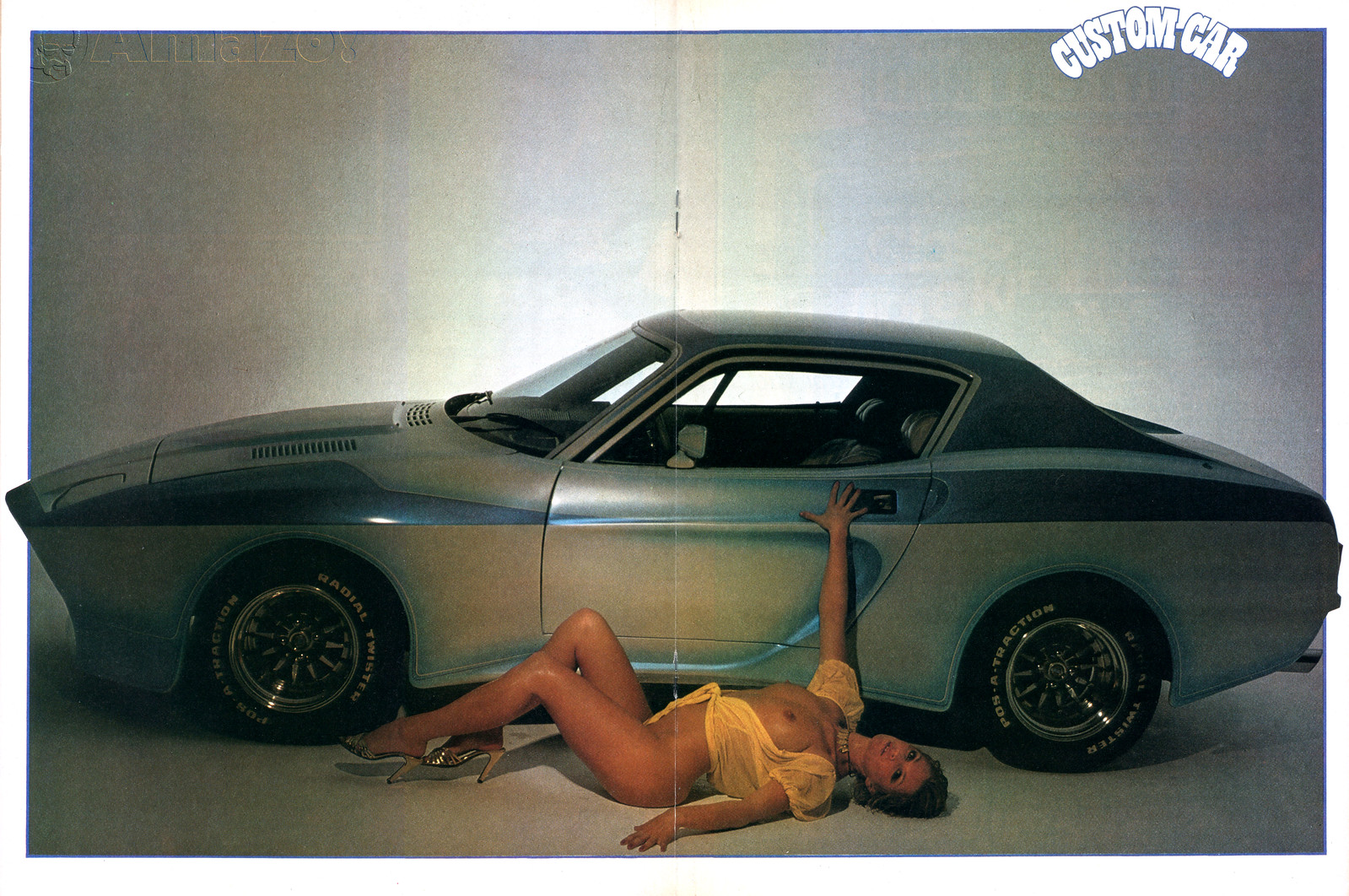
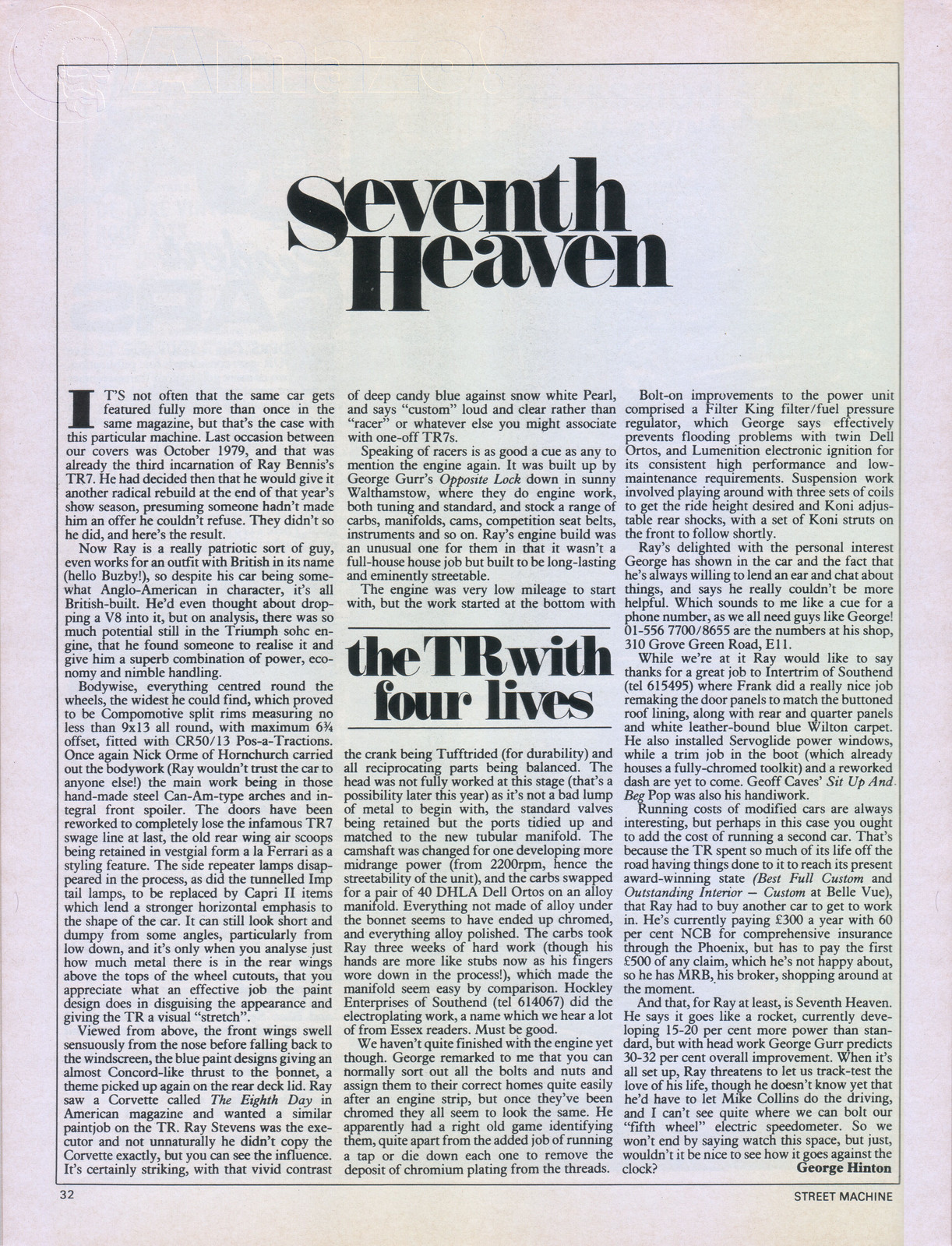

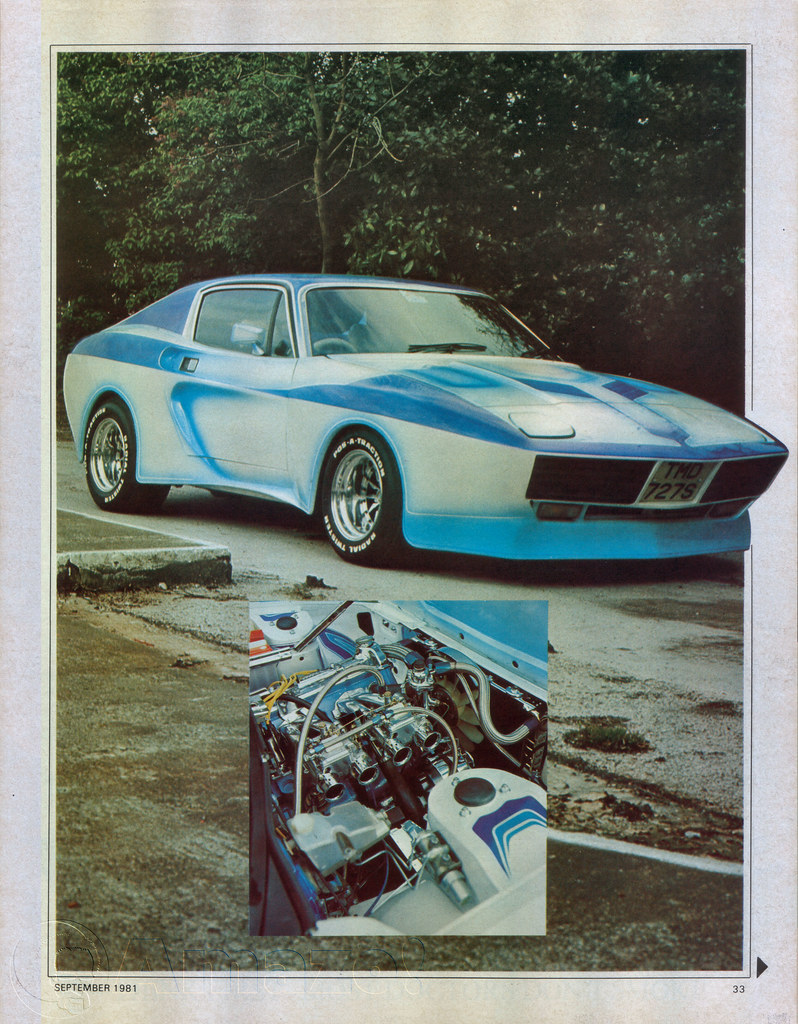

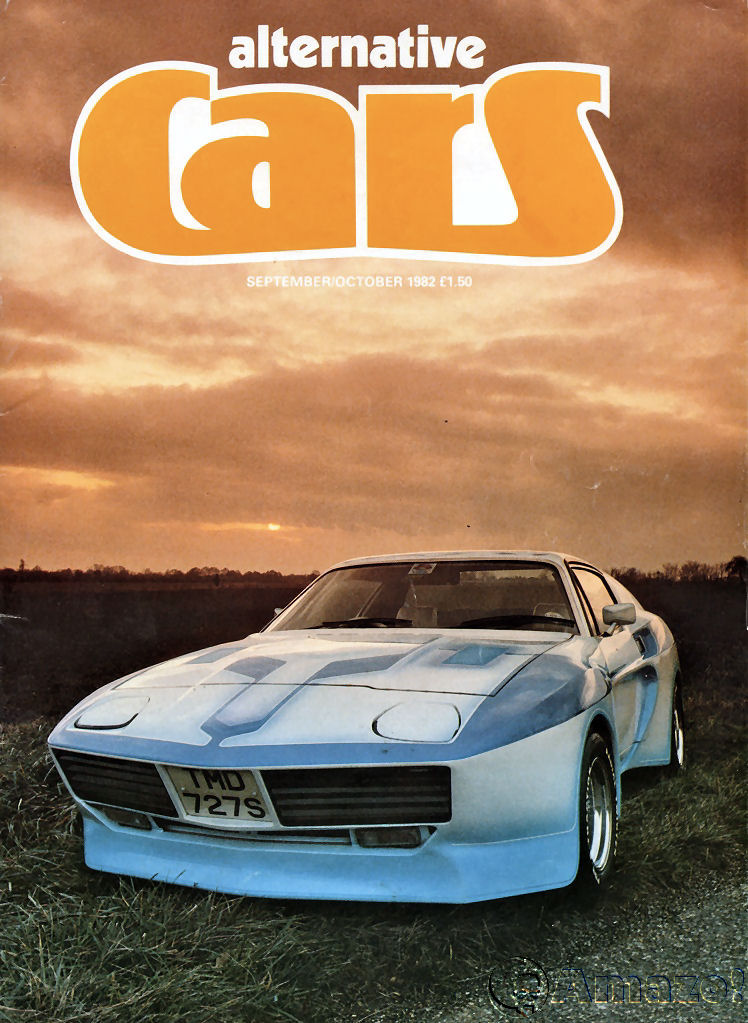
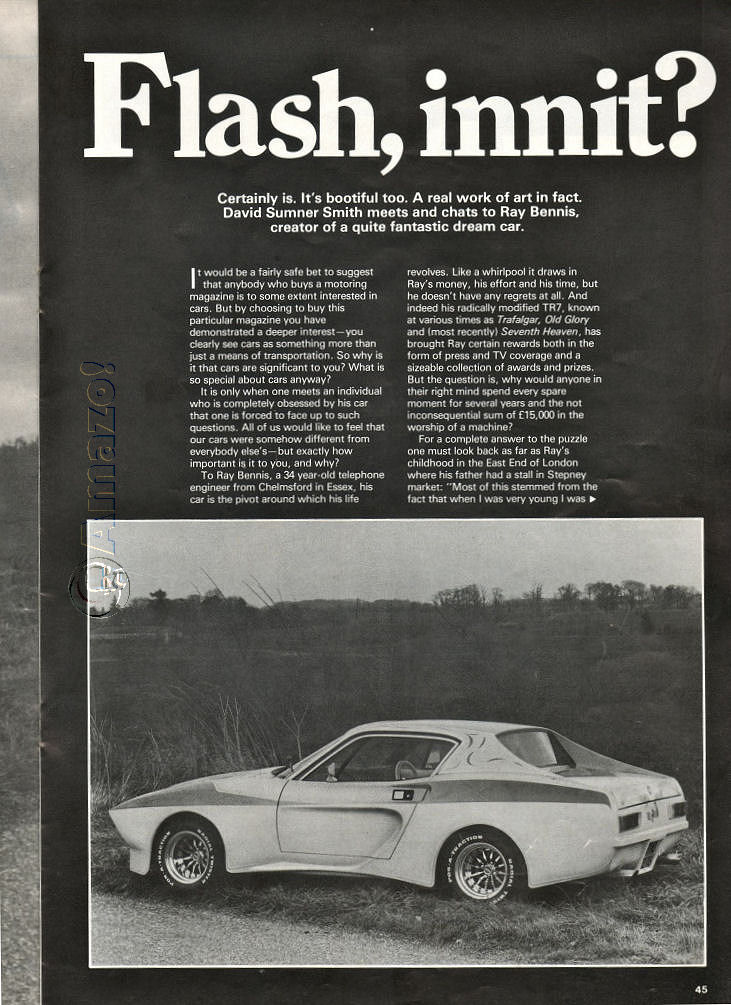
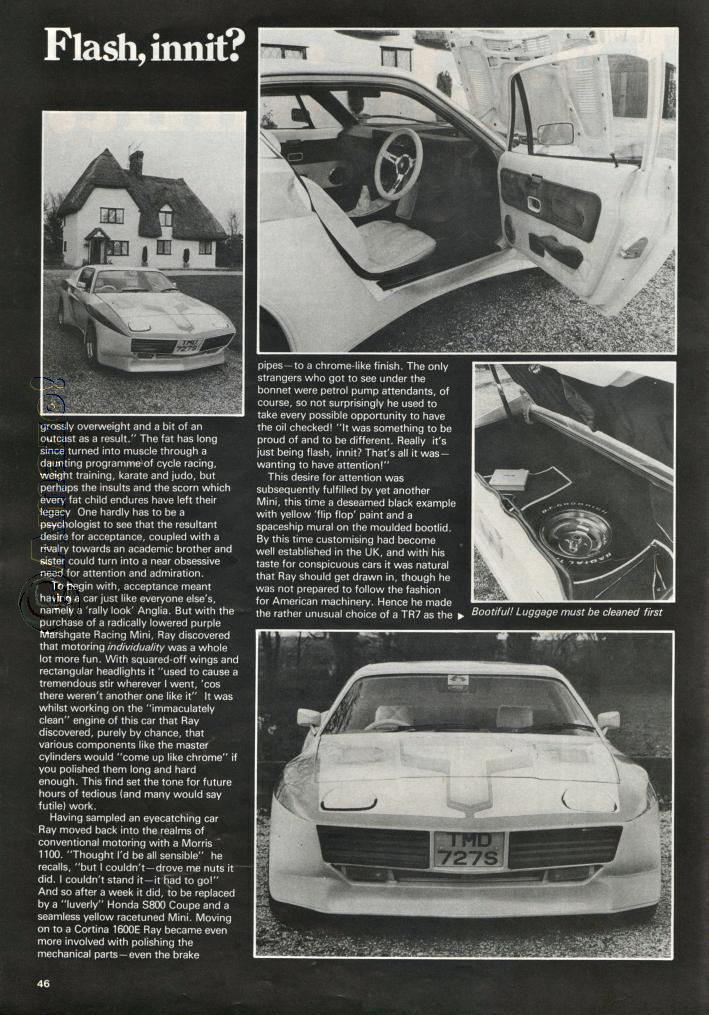
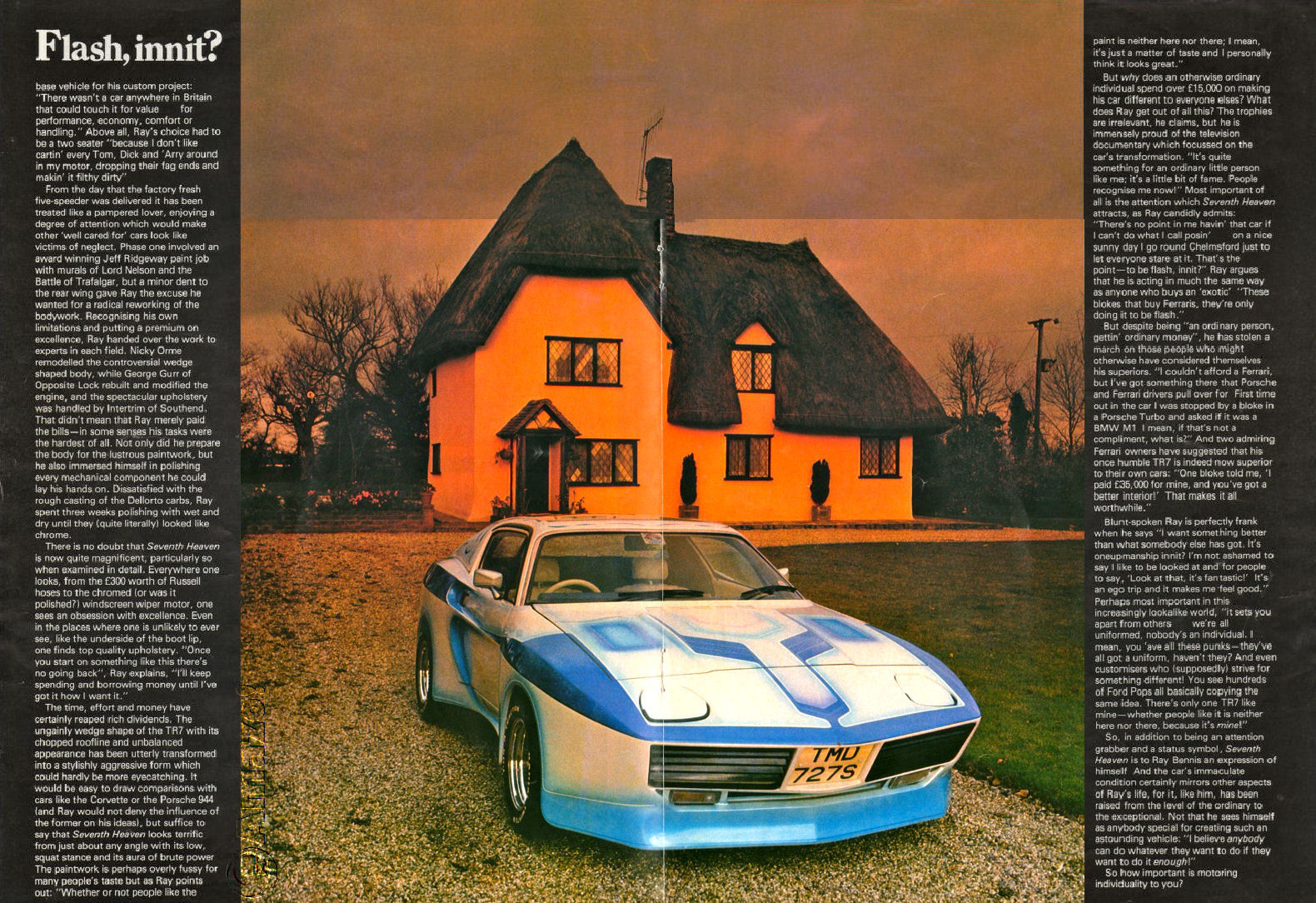


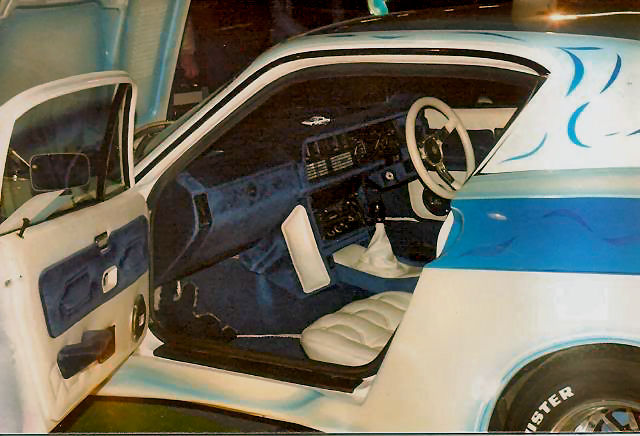
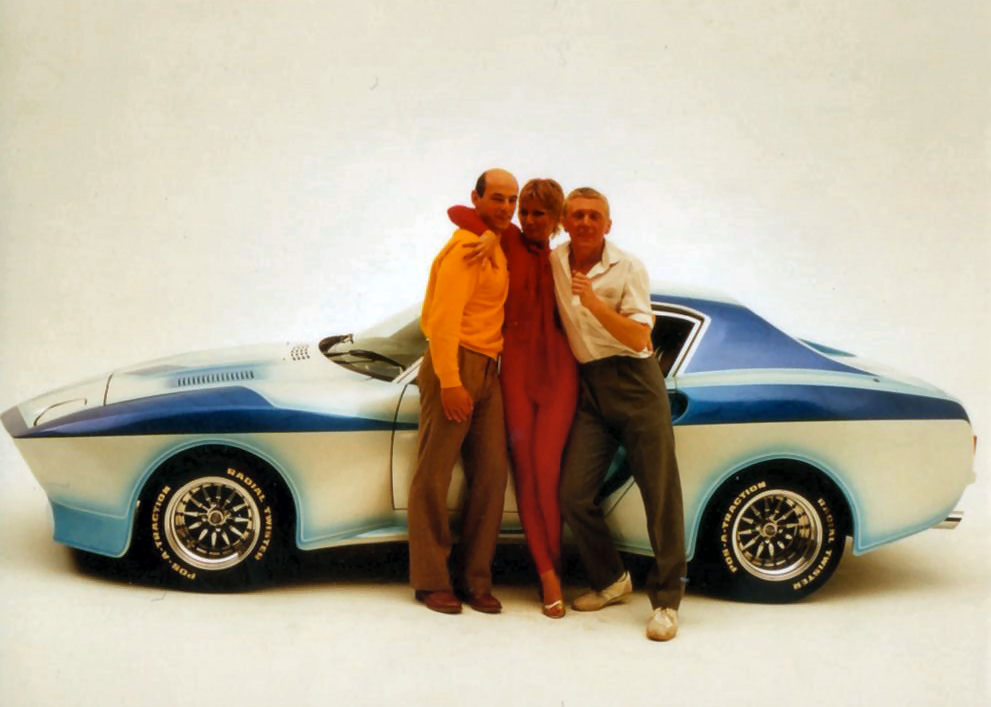
No comments:
Post a Comment